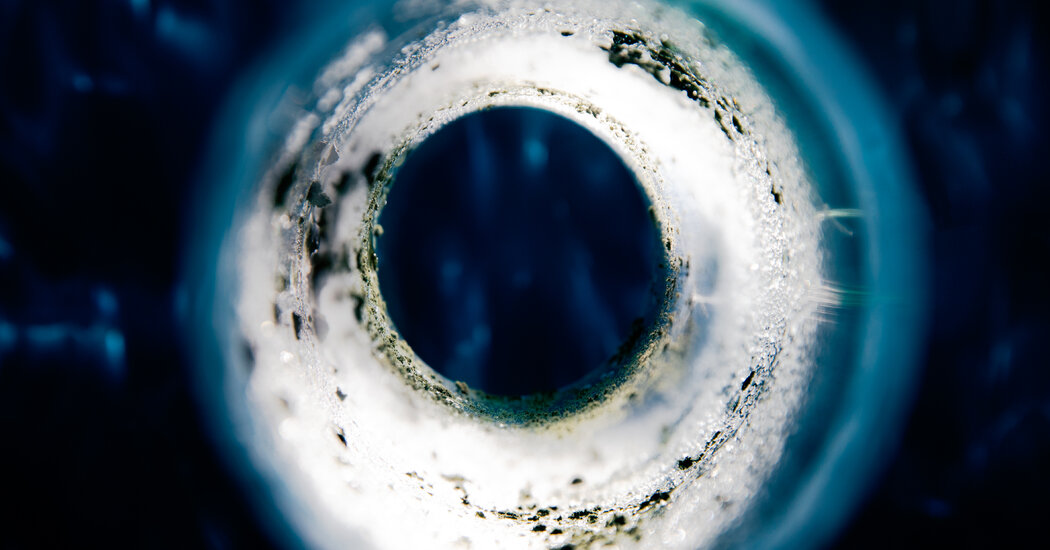Reusable water bottles are a great way to get hydrated and stay energized. Many can help minimize your exposure to nanoplastics. They’re trendy, and better for the environment than plastic bottles.
But they can also become a veritable hall of moldy horrors when you forget to wash them.
If you’ve been a little too lax about cleaning your bottle, should you be worried? Here’s what scientists know about the health risks of different types of mold, how to prevent their buildup in your bottle and when to give up and get a new one.
What happens if you don’t clean your bottle properly?
“Mold thrives in moist environments,” said Dr. Wanda Phipatanakul, an immunologist who studies environmental allergens at Boston Children’s Hospital.
If water sits in your bottle for days, it can create a breeding ground for mold spores from the air and pipes in your house to settle and multiply, Dr. Phipatanakul said. There are some common ones that may colonize your bottle: Cladosporium, which is known for its dark green or brown appearance; Penicillium, which can manifest in blue or green hues; Aspergillus, which may appear as white, yellow or green spots; and Stachybotrys, which show up as black spots.
But these fungi aren’t the only organisms that grow in dark, damp conditions. Every time you take a sip of water, you may also transfer bacteria from your mouth to the lip or spout of your bottle. These microbes can sometimes clump together with fungi to form slimy biofilms.
If you put something other than water — like a sports drink — in your bottle or leave food residue on it from something you ate, the sugars left behind can accelerate the growth of these microorganisms.
Can drinking from a moldy bottle harm your health?
Drinking a little bit of water from a moldy bottle can be gross, but probably won’t cause much harm — as long as you don’t keep drinking it and clean your bottle right away, Dr. Phipatanakul said. Most species of mold are fairly harmless and our immune system is adept at getting rid of these pathogens when we encounter them, she said.
A few people, however, may be more sensitive to mold exposure, such as those with compromised immune systems, asthma or allergies to mold. These individuals may be more likely to get headaches, feel fatigued or experience other classic allergy symptoms, such as nasal congestion.
And anyone who ingests or inhales a lot of mold over several weeks may experience nausea and an upset stomach. But there isn’t any evidence that short-term exposure to mold can cause serious health issues like bronchitis, brain fog, chronic fatigue or even an emergency room visit as many TikTok videos suggest. “I don’t see a lot of people ending up in the hospital because of mold in their water bottle” Dr. Phipatanakul said.
The levels of mold in a water bottle most likely will not be high enough to trigger these reactions, Dr. Phipatanakul said. If you’re experiencing symptoms that you suspect were caused by a mold sensitivity, it’s also possible you are being exposed to mold spores from other sources, such as your humidifier, bathroom or even the walls of your house.
How to prevent mold buildup
To keep your water bottle clean, wash it every day, or at the absolute minimum, once a week. If it is dishwasher-safe, wash it on the hottest water setting. If you’re hand-washing, make sure to use a bottle brush to clean narrow necks and the inside of straws, Dr. Phipatanakul said.
Most of the time, a quick scrub with soap and water should be just fine. But if you want to do a deeper clean every few weeks, try soaking your bottle for 30 minutes in equal parts water and white vinegar, which is known to kill mold spores.
Mixing vinegar with baking soda can also create fizz to help physically dislodge some mold. Or you can get a similar effect by using denture tablets. Just remember to take apart all the detachable parts of your bottle, like flip-top straws or valves where mold might hide. And let everything dry out before you use it again.
If there’s still grime in your bottle after you’ve scrubbed and soaked it, Dr. Phipatanakul said, “I would just get rid of it.” You’ll be better off drinking from a fresh bottle.
